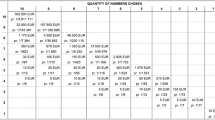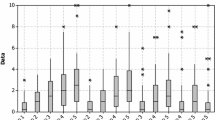Abstract
Observed patterns of lottery play suggest that many players believe they can improve their chance of winning by adjusting their bets according to which numbers have won in recent drawings, or in response to their dreams or other portents. This skill orientation is encouraged by state lottery advertising, which tends to be misleading in other respects as well. Patterns of lottery play and the content of lottery commercials provide readily available illustrations of psychological tendencies in risky decision-making that have been documented in laboratory experiments.
Similar content being viewed by others
References
Clotfelter, Charles T. and Philip J. Cook. (1989).Selling Hope: State Lotteries in America. Cambridge, MA: Harvard University Press.
Clotfelter, Charles T. and Philip J. Cook. (1990). “On the Economics of State Lotteries”,Journal of Economic Perspectives 4(4), 105–119.
Author information
Authors and Affiliations
Additional information
This article is based on an informal presentation the authors gave at the Fifth International Conference on the Foundation and Application of Utility, Risk, and Decisions Theories at Duke University, June 11, 1990.
Rights and permissions
About this article
Cite this article
Clotfelter, C.T., Cook, P.J. Lotteries in the real world. J Risk Uncertainty 4, 227–232 (1991). https://doi.org/10.1007/BF00114154
Issue Date:
DOI: https://doi.org/10.1007/BF00114154




